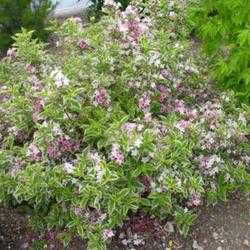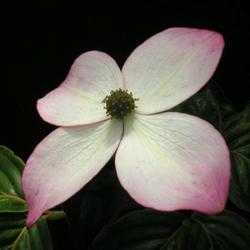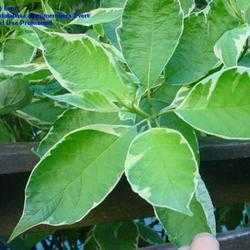(Editor's Note: This article was originally published on July 25, 2009. Your comments are welcome, but please be aware that authors of previously published articles may not be able to promptly respond to new questions or comments.)
There have been several articles on Dave's Garden dealing with dogwoods or the genus Cornus. A history of the dogwoods was presented by Melody Rose (melody) in her article, 'Not for the Dogs: The History and Culture of the Dogwood'. The red-osier or red-twig dogwoods were covered in two articles, 'Red-twig Dogwoods - A Shrub for All Seasons', which I wrote; and 'Adding Some Year-round Interest in the Garden with Red Twig Dogwood' by Darius Van d'Rhys. Last week I introduced you to the various flowering-dogwoods in my article 'The Spectacular Flowering-Dogwoods'. There is no doubt that the genus Cornus is an important group of plants for gardeners in temperate regions. To complete the picture on the genus, I thought I would describe some of the other garden-worthy dogwoods that exist. Just as a reminder, most of the dogwoods prefer dappled shade or morning sun with shade from the hottest part of the day. The soil should be moist, organic-rich and on the acidic side. None are suitable for dry conditions.
One of the few edible woody dogwoods is the Cornelian cherry, C. mas. This European species forms a large shrub or small tree to 5 m. Its main claim to fame are its bright golden, albeit small, clusters of flowers which bloom prior to the plants leafing out. They bloom at the tail end of the Chinese witch-hazel blooming season. Together with the witch-hazels, star-magnolia and the February daphne, they are the ‘woody' harbingers of spring. In late summer, quite large cherry-like fruit form which can be made into jams and preserves. Fall colour is quite attractive, adding to the value of this hardy (zone 4) plant. The cultivar ‘Aurea' has yellow foliage, 'Variegata' has white-edged leaves and ‘Elegantissima' has leaves edged in yellow and pink. There are several other named cultivars which are based primarily on fruit size. In milder areas there are two Cornelian cherry look-alikes you could grow; C. officinalis and C. chinensis. Both produce yellow flowers before the trees leaf. The former species (hardy to zone 6) has red fruit while the latter (hardy to zone 8) has black fruit.



Details of C. mas; the last photo shows the cultivar 'Variegata'
There are several dogwoods native to North America, especially in the east. The pagoda dogwood, C. alternifolia (zone 4), forms a large shrub or small tree to 9m with a multi-layed effect, showy clusters of small white flowers followed by black fruit and excellent burgundy fall colour. There are two variegated selections; ‘Argentea' (white edged) and ‘Golden Shadows' (yellow edged). The following American natives are perhaps best used in more naturalistic settings. The grey dogwood, C. racemosa (zone 4), appears like a giant version of the red-osier dogwood (to 5 m) but its stems are grey, not red. The flowering is modest and the white fruit can be prolific at times. The southern counterpart of the grey dogwood is the swamp dogwood, C. foemina (zone 7). The silky dogwoods, C. amomum (zone 5), C. obliqua (zone 4) and C. drummondii (zone 4) are somewhat similar to the grey and swamp dogwoods producing white, flat-topped clusters of blooms followed by white (C. amomum and C. drummondii) or blue berries (C. obliqua). The western American counterpart is C. glabrata (zone 7).


Details of C. alternifolia


The two notable variegated C. alternifolia cultivars are 'Golden Shadows' and 'Argentea'


Details of the silky dogwoods (the examples shown are from C. drummondii)
There are two Chinese deciduous dogwoods of note. The giant dogwood, Cornus controversa, is like a steroidal version of C. alternifolia, reaching 10 m or more. The flat-topped clusters of creamy-white flowers are followed by blue-black fruit. This species is rated hardy to zone 5. The cultivar ‘Variegata' has striking creamy-white leaf margins. The large-leaved dogwood, C. macrophylla, is another giant shrub (10 m plus) with a prolific display of white flowers followed by edible, blue fruit. It is rated for zone 6.


The most popular form of C. controversa is the cultivar 'Variegata'
In really mild areas (zones 8 and 9) you can choose to grow some of the evergreen dogwood species. These primarily hail from the Himalayas. Perhaps the most popular of these is C. capitata commonly called the Himalayan Strawberry Tree. In the wild, this species may reach 15 m but in the garden, generally grow as a large shrub. The foliage is dark green with greyish undersides. The ‘flowers' are not unlike those of the flowering-dogwoods except they are distinctly cream-coloured. Cornus elliptica is hardy to zone 7 and looks very much like an evergreen form of C. kousa with large, white bracts. Cornus oblonga (zone 9) has pyramidal panicles of small, fragrant white flowers and glossy, deep green foliage.


Details of C. capitata
Finally, on the other side of the coin, are the super-hardy (zone 2), dwarf groundcover dogwoods which include the common bunchberry, C. canadensis, the western bunchberry, C. unalaschkensis and the Swedish bunchberry, C. suecica. The previous two species are commonly found as forest-floor wildflowers while the latter prefers open coastal regions. All grow 10-15 cm tall and spread via underground rhizomes. Each stem produces a single cluster of tiny flowers surrounded by four large white bracts. The true flowers are greenish to cream on C. canadensis while they are purple on the other two. The flowers develop into relatively large, orange-red, raspberry-like fruit by late summer. Their berries are edible but rather tasteless. These three species are wonderful additions to the shade garden or rockery.



Details of the 'bunchberries': on the left is a side-by-side coparison of C. suecica and C. canadensis, followed by the fruit of C. suecica and the fruit of C. canadensis
As can be seen from the various articles devoted to dogwoods, this genus exhibits wonderful variation and allows some species to be useful in just about any garden situation (except the xeric garden). Hopefully these articles will inspire you to try some of the dogwoods in your own garden.
The following people must be thanked for the use of their pictures. Without them, this article would be pretty black and white! bootandall (C. capitata fruit), GardenGuyKin (C. mas fruit), growin (C. controversa and C. alternifolia 'Argentea'), Jeff_Beck (C. drummondii), kennedyh (C. capitata), linjasar (C. alternifola 'Golden Shadows'), OhioBreezy (C. alternifolia) and plantaholic (C. mas 'Variegata')
















